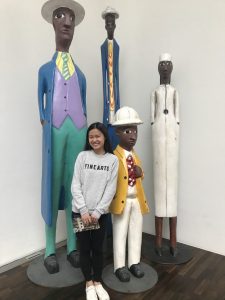When Nazi occupied Paris in 1940, Hitler posed in front of his favorite place in Paris, the Eiffel tower. Why he posed in front of Eiffel tower instead of posing on the top of the Eiffel tower? The lift of the tower was sabotaged before Nazi conquered Paris. Therefore, there was a saying that Hitler conquered Paris, but he never conquers Eiffel tower (Selwyn-Holmes, 2010). Speaking of that famous picture, the picture was taken in the front terrace of the Musée de l’Homme, an anthropology museum that contains collections of human in evolution, diversity of human and human in social contexts. On one of our class trips, we visited Musée de l’Homme. Among all of the historical human skeletons and artifacts, I saw a familiar Chinese acupuncture man model with lots of acupuncture points labeled on the body. After being practiced in China and other countries for thousands of years, acupuncture became one of the alternative medicine in western world. How does acupuncture become a common practice and how does it work?

Me with the super tall guys






